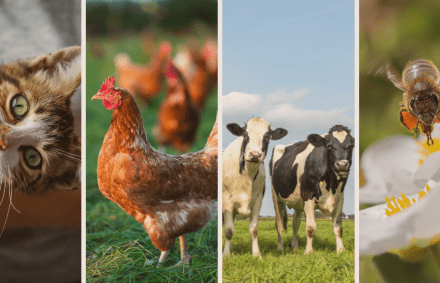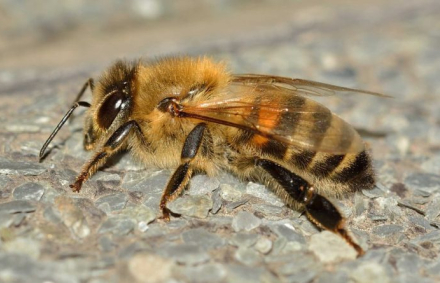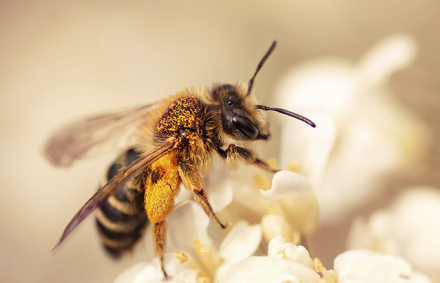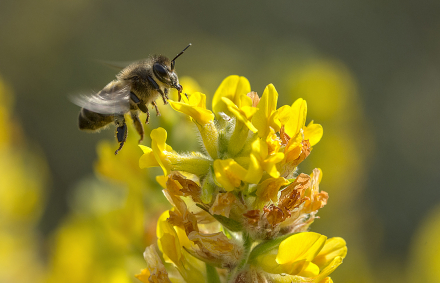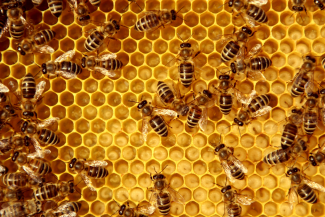
The worldwide agricultural trend is towards large monoculture farms, which reduce plant biodiversity and constitute a single source of nectar and pollen for bees. Furthermore, this type of agriculture is also associated with the excessive use of phytosanitary products. Consequently, bees can suffer from nutritional imbalances and be affected by the sub-lethal or toxic effects of these chemical treatments.
Poor bee nutrition will increase the negative impact of various diseases, contributing to a loss of productivity and of hives.
What is bee feeding based on?
The diet of bees is based on 80-90% honey, which mainly provides them with carbohydrates, as well as enzymes, minerals, and organic acids, and 10-20% pollen, which provides them with protein, as well as carbohydrates, amino acids, fats, mineral elements, fiber, vitamins, and other minority components.
In addition, we must not forget water, a fundamental pillar for the thermoregulation of the hive, since it maintains the humidity for the development of the brood, the dilution of the reserves, and the glandular secretions. It is also the fundamental basis for transporting nutrients within the bee organism.
On the other hand, sugars are also vital as they will be used for energy production, the formation of the chitin exoskeleton, energy storage, and the formation of other molecules, etc. Pollen will also provide the necessary components for forming different tissues, production of antimicrobial peptides (Danihlik, 2018), reservoir of molecules, development of hypopharyngeal glands, and increase of vitellogenin.
What is vitellogenin?
Vitellogenin is a protein that has several functions in bees: from the nutrition of the embryo in the egg or the reserve function to being a transporter of nutrients in the hemolymph, involved in immunity and longevity, among other aspects.
Increasingly, vitellogenin gene expression analysis is used in the majority of nutritional studies to assess the impact of diet on bee health, as increased expression of this protein is associated with improved bee health and longevity.
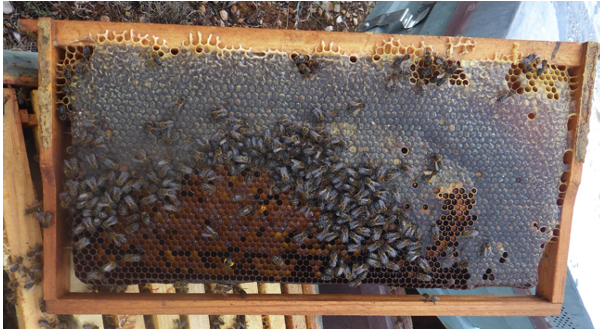
Image 1. Honey and pollen reserves in the hive. Photo Archive Pajuelo.
Essential amino acids and protein supplements
Essential amino acids - those that cannot be synthesized by bees and must be acquired through the diet (pollen) - are also essential. However, not all pollens have the same protein content and, at times, some lack some of these essential amino acids, which can negatively affect bee development.
At these times, protein supplements, such as Calier’s Promotor L®, play an essential role in helping make up for these deficiencies. We can also use this feed to stimulate rapid population growth or add it to our solid formulations for population maintenance, for example, in the winter.
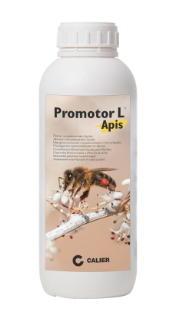
Image 2. Photo Promoter L (Calier)
These supplements also provide vitamins. In the hive, these vitamins are mainly produced during the fermentation of pollen in the comb and in the intestinal tract of the bees by the microbiota. In Calier’s Promotor L®, we find B group vitamins that are crucial in the development of the hypopharyngeal glands and, therefore, in the production of royal jelly. This group of vitamins is also involved in the development of the offspring, especially vitamins B2, B3 (niacinamide) and B6.
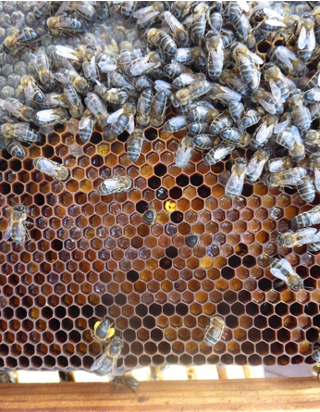
Image 3. Fermented pollen in honeycomb. Photo Archive Pajuelo.
Other pollen components becoming increasingly important are fats, among which sterols are the most frequent. Among fats, we find essential fatty acids, which, as with essential amino acids, bees need to acquire through the diet. In pollen, they represent 43% of the total fatty acids, and linoleic (ω6) and α-linolenic (ω3) acids are particularly relevant in bee nutrition, with a ω6:ω3 ratio of around 0.8 in pollen. Several studies conclude that a deficit of ω3 in the bee diet implies poor development of the hypopharyngeal glands and, if associated with a high ω6:ω3 ratio, generates cognitive disorder, mortality, and reduced brood (Arien et al., 2015; 2018; 2020) (we must consider that these results are performed with bees in boxes, under laboratory conditions, controlling the intake of the different nutrients).
As we can see, compared to past decades, the current trend is directed towards the formulation of increasingly complete feeds, based on the needs of bees with the aim of replacing possible deficiencies. When we feed our bees, the effects of this diet will not be immediately apparent, but in unfavorable conditions, well-nourished bees will be able to overcome these situations better than those that have certain deficiencies.
